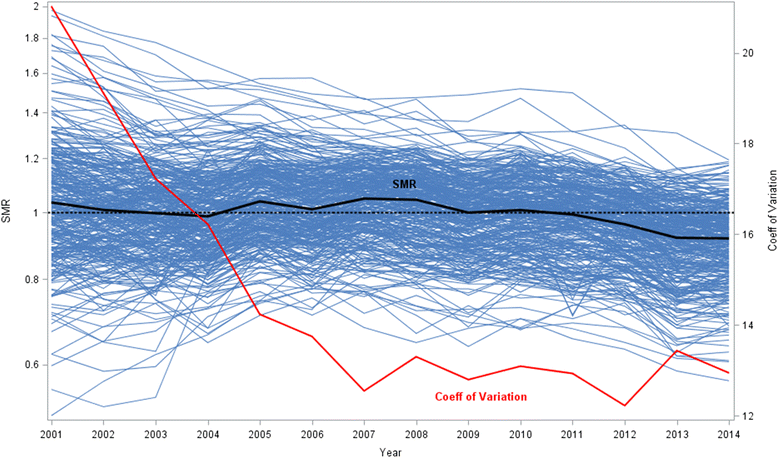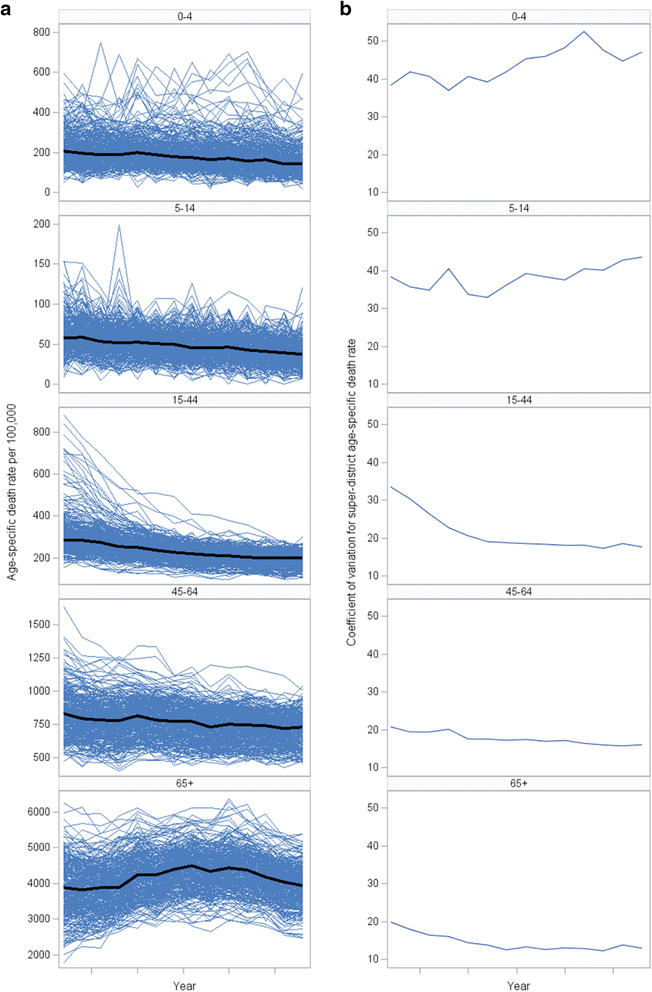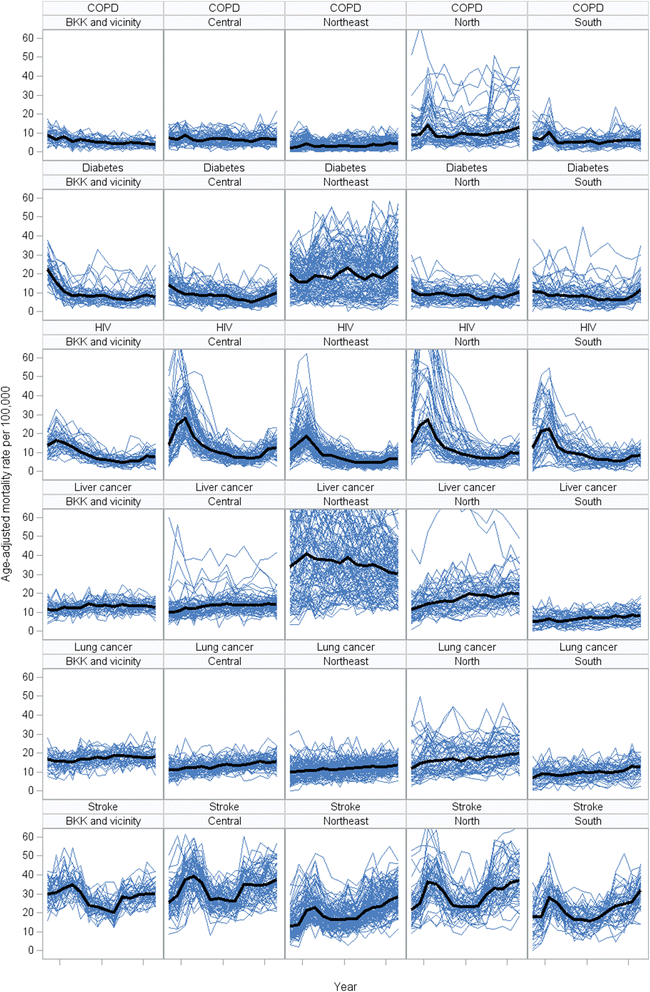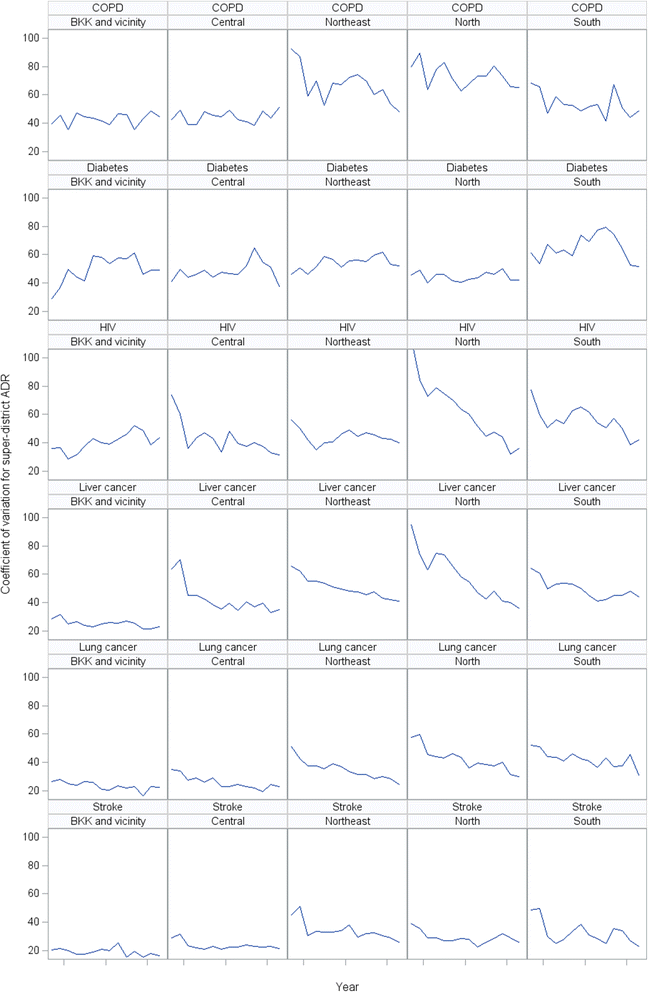Post universal health coverage trend and geographical inequalities of mortality in Thailand
- PMID: 27876056
- PMCID: PMC5120448
- DOI: 10.1186/s12939-016-0479-5
Post universal health coverage trend and geographical inequalities of mortality in Thailand
Abstract
Background: Thailand has achieved remarkable improvement in health status since the achievement of universal health coverage in 2002. Health equity has improved significantly. However, challenges on health inequity still remain.This study aimed to determine the trends of geographical inequalities in disease specific mortality in Thailand after the country achieved universal health coverage.
Methods: National vital registration data from 2001 to 2014 were used to calculate age-adjusted mortality rate and standardized mortality ratio (SMR). To minimize large variations in mortality across administrative districts, the adjacent districts were systematically grouped into "super-districts" by taking into account the population size and proximity. Geographical mortality inequality among super-districts was measured by the coefficient of variation. Mixed effects modeling was used to test the difference in trends between super-districts.
Results: The overall SMR steadily declined from 1.2 in 2001 to 0.9 in 2014. The upper north and upper northeast regions had higher SMR whereas Greater Bangkok achieved the lowest SMR. Decreases in SMR were mostly seen in Greater Bangkok and the upper northern region. Coefficient of variation of SMR rapidly decreased from 20.0 in 2001 to 12.5 in 2007 and remained close to this value until 2014. The mixed effects modelling revealed significant differences in trends of SMR across super-districts. Inequality in mortality declined among adults (≥15 years old) but increased in children (0-14 years old). A declining trend in inequality of mortality was seen in almost all regions except Greater Bangkok where the inequality in SMR remained high throughout the study period.
Conclusions: A decline in the adult mortality inequality across almost all regions of Thailand followed universal health coverage. Inequalities in child mortality rates and among residents of Greater Bangkok need further exploration.
Keywords: Geographical inequalities; Mortality; Thailand.
Figures








References
-
- United Nations . Transforming our World: The 2030 Agenda for Sustainable Development. New York: United Nations; 2015.
-
- Somkotra T. Socioeconomic inequality in self-reported oral health status: the experience of Thailand after implementation of the universal coverage policy. Community Dent Health. 2011;28:136–42. - PubMed
MeSH terms
LinkOut - more resources
Full Text Sources
Other Literature Sources
Medical

